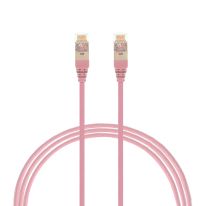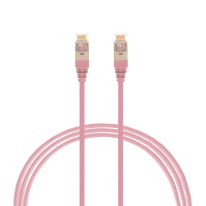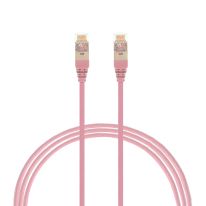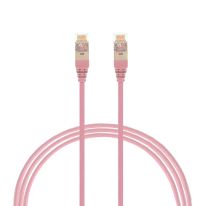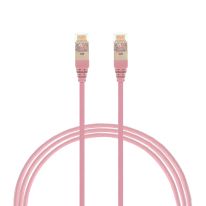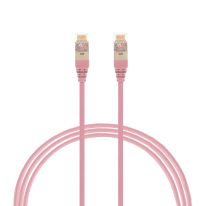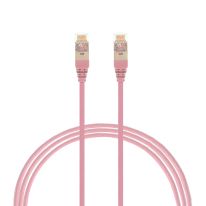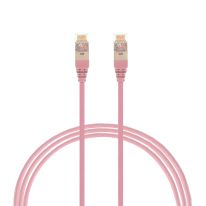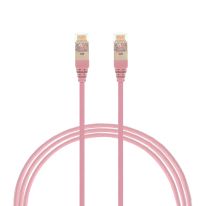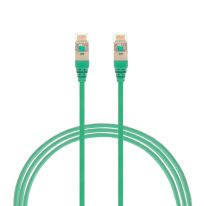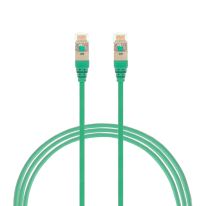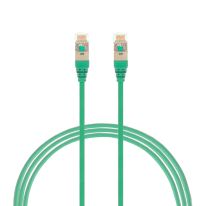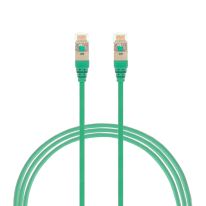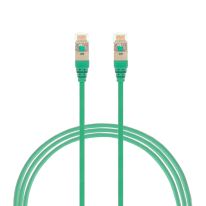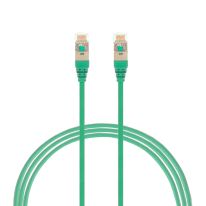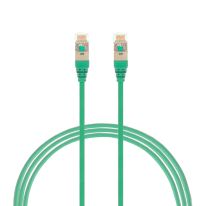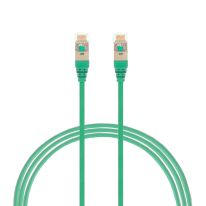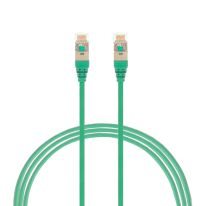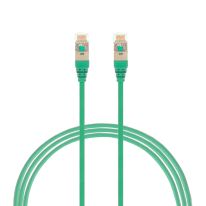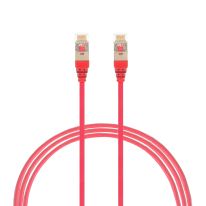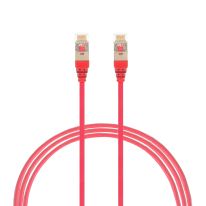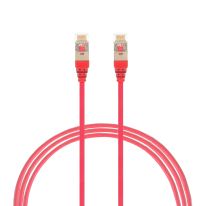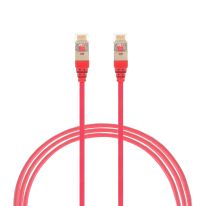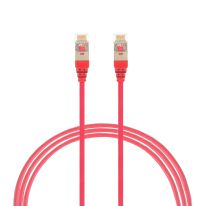-
SaleSKU: 004.300.9017 2.5m CAT6A RJ45 S/FTP THIN LSZH 30 AWG Network Cable | Pink
Single Pack
Special Price $11.97 $10.88 Regular Price $17.09 $15.54In stock
-
SKU: 004.300.9016 0.75m CAT6A RJ45 S/FTP THIN LSZH 30 AWG Network Cable | Pink
Single Pack
$9.92 $9.02In stock
-
SKU: 004.300.9007 5m CAT6A RJ45 S/FTP THIN LSZH 30 AWG Network Cable | Pink
Single Pack
$25.87 $23.52In stock
-
SKU: 004.300.9006 3m CAT6A RJ45 S/FTP THIN LSZH 30 AWG Network Cable | Pink
Single Pack
$18.67 $16.97In stock
-
SKU: 004.300.9005 2m CAT6A RJ45 S/FTP THIN LSZH 30 AWG Network Cable | Pink
Single Pack
$15.46 $14.05In stock
-
SKU: 004.300.9004 1.5m CAT6A RJ45 S/FTP THIN LSZH 30 AWG Network Cable | Pink
Single Pack
$12.99 $11.81In stock
-
SKU: 004.300.9003 1m CAT6A RJ45 S/FTP THIN LSZH 30 AWG Network Cable | Pink
Single Pack
$10.80 $9.82In stock
-
SKU: 004.300.9001 0.5m CAT6A RJ45 S/FTP THIN LSZH 30 AWG Network Cable | Pink
Single Pack
$9.02 $8.20In stock
-
SKU: 004.300.9000 0.25m CAT6A RJ45 S/FTP THIN LSZH 30 AWG Network Cable | Pink
Single Pack
$7.83 $7.12In stock
-
SKU: 004.300.8018 4m CAT6A RJ45 S/FTP THIN LSZH 30 AWG Network Cable | Green
Single Pack
$22.30 $20.27In stock
-
SKU: 004.300.8017 2.5m CAT6A RJ45 S/FTP THIN LSZH 30 AWG Network Cable | Green
Single Pack
$17.09 $15.54In stock
-
SKU: 004.300.8016 0.75m CAT6A RJ45 S/FTP THIN LSZH 30 AWG Network Cable | Green
Single Pack
$9.92 $9.02In stock
-
SKU: 004.300.8007 5m CAT6A RJ45 S/FTP THIN LSZH 30 AWG Network Cable | Green
Single Pack
$25.87 $23.52In stock
-
SKU: 004.300.8006 3m CAT6A RJ45 S/FTP THIN LSZH 30 AWG Network Cable | Green
Single Pack
$18.67 $16.97In stock
-
SKU: 004.300.8005 2m CAT6A RJ45 S/FTP THIN LSZH 30 AWG Network Cable | Green
Single Pack
$15.46 $14.05In stock
-
SKU: 004.300.8004 1.5m CAT6A RJ45 S/FTP THIN LSZH 30 AWG Network Cable | Green
Single Pack
$12.99 $11.81In stock
-
SKU: 004.300.8003 1m CAT6A RJ45 S/FTP THIN LSZH 30 AWG Network Cable | Green
Single Pack
$10.80 $9.82In stock
-
SaleSKU: 004.300.8001 0.5m CAT6A RJ45 S/FTP THIN LSZH 30 AWG Network Cable | Green
Single Pack
Special Price $6.94 $6.31 Regular Price $9.02 $8.20In stock
-
SKU: 004.300.8000 0.25m CAT6A RJ45 S/FTP THIN LSZH 30 AWG Network Cable | Green
Single Pack
$7.83 $7.12In stock
-
SaleSKU: 004.300.1018 4m CAT6A RJ45 S/FTP THIN LSZH 30 AWG Network Cable | Red
Single Pack
Special Price $15.61 $14.19 Regular Price $22.30 $20.27In stock
-
SKU: 004.300.1017 2.5m CAT6A RJ45 S/FTP THIN LSZH 30 AWG Network Cable | Red
Single Pack
$17.09 $15.54In stock
-
SKU: 004.300.1016 0.75m CAT6A RJ45 S/FTP THIN LSZH 30 AWG Network Cable | Red
Single Pack
$9.92 $9.02In stock
-
SKU: 004.300.1007 5m CAT6A RJ45 S/FTP THIN LSZH 30 AWG Network Cable | Red
Single Pack
$25.87 $23.52In stock
-
SKU: 004.300.1006 3m CAT6A RJ45 S/FTP THIN LSZH 30 AWG Network Cable | Red
Single Pack
$18.67 $16.97In stock
CAT6A Ethernet Cables
438 Results





